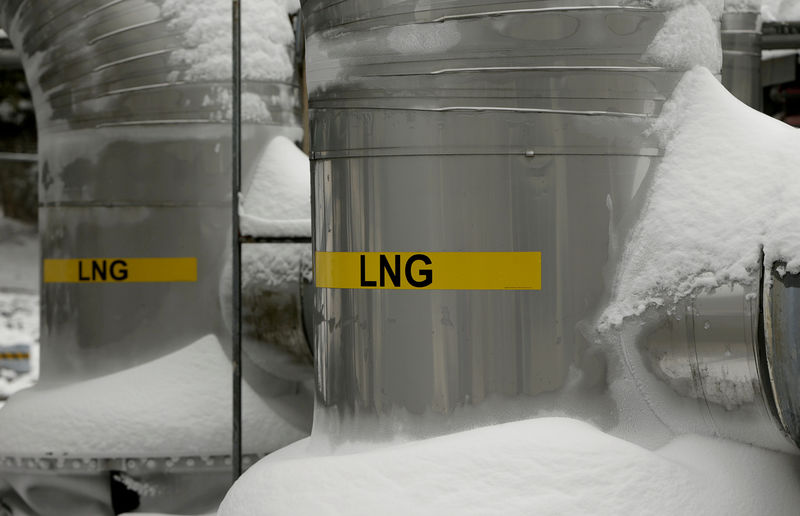(Bloomberg) -- The world’s biggest producer of liquefied natural gas wants to bulk up as competing supplies from Australia and the U.S. are also set to come to the market over the next decade.
State-owned Qatar Petroleum will build four new liquefaction plants, known as trains, by 2025, up from a previously announced three, Chief Executive Officer Saad Sherida Al Kaabi told reporters in Doha. That will boost production to 110 million tons of LNG a year from 77 million currently. Qatar last year announced plans to boost capacity to 100 million tons within seven years.
The decision to increase output even more was driven by rising demand for gas and the “good results obtained through recent additional appraisal and testing in the North Field,” Al Kaabi said, referring to Qatar’s portion of the giant offshore reservoir shared with Iran. Qatar’s total production of oil and gas will reach an equivalent of 6.2 million barrels a day when the expansion is complete, up from 4.8 million currently, he said.
Global LNG consumption is expected to rise by more than a third over the next decade to 416 million tons a year, according to Bloomberg New Energy Finance. Chinese imports of the fuel surged 35 percent in the first eight months of this year, and gas producers from Australia, Africa and the U.S. are boosting output to capture a bigger share of this growing market.
Qatar Petroleum plans to make its final investment decision on the expansion by the end of 2019 and to reach its 110 million ton per year target in 2024, Al Kaabi said. Tenders to drill new offshore wells will be issued next month.
Even if the company makes a final investment decision next year, “it will be very challenging for them to bring all the planned capacity online in five or six years,” said Maggie Kuang, an analyst at Bloomberg NEF. “Competition for labor and equipment will increase globally, and the smaller plants planned in the U.S. will likely be quicker to build than the mega-trains in Qatar.”
Al Kaabi didn’t disclose how much Qatar Petroleum will spend on the expansion. He said the country’s LNG projects have the lowest costs in the world. Sanford C Bernstein Ltd. estimated the additional 23 million tons of production to 100 million tons could cost about $27.6 billion, far lower than the $88 billion that Chevron Corp. (NYSE:CVX) spent to build the 24.5 million ton-per-year Gorgon and Wheatstone export developments in Australia.
Qatar Petroleum hasn’t decided how to finance the project but has ruled out at least one potential source of funds: an initial public offering. Al Kaabi said Qatar Petroleum has no IPO plans. “Efforts in this area by some countries have stumbled,” he said. The world’s biggest oil producer, Saudi Arabian Oil Co., put its planned share sale on hold in August after almost three years of preparation.
